Showing Spotlights 705 - 712 of 2879 in category All (newest first):
 Researchers report an interesting phenomenon of two-dimensional (2D) hexagonal boron nitride (h-BN)-induced planar-alignment of a nematic liquid crystal and the subsequent optical and electro-optical effects. Liquid crystals (LCs) are optically anisotropic materials, and they are widely used in electro-optical display technology, known as liquid crystal displays (LCDs). Understanding the alignment phenomena of a nematic LC on a surface remains an important area of research, as the alignment process determines the LC's molecular orientation and conformation - which influence the LC's optical and electro-optical characteristics in LCDs.
Researchers report an interesting phenomenon of two-dimensional (2D) hexagonal boron nitride (h-BN)-induced planar-alignment of a nematic liquid crystal and the subsequent optical and electro-optical effects. Liquid crystals (LCs) are optically anisotropic materials, and they are widely used in electro-optical display technology, known as liquid crystal displays (LCDs). Understanding the alignment phenomena of a nematic LC on a surface remains an important area of research, as the alignment process determines the LC's molecular orientation and conformation - which influence the LC's optical and electro-optical characteristics in LCDs.
Jan 9th, 2019
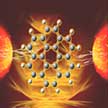 Sluggish electron transport kinetics - also known as aging - has hindered the application of graphene, for example, as transparent photodiode sensors in optoelectronics, graphites for effective use as oxygen reducing agents in fuel cells and so many other applications that involve fast heterogeneous electron transport and even increased capacitance. Scientists now report a breakthrough solution to the oxidation-induced sluggish electron transport in graphite (and even graphene).
Sluggish electron transport kinetics - also known as aging - has hindered the application of graphene, for example, as transparent photodiode sensors in optoelectronics, graphites for effective use as oxygen reducing agents in fuel cells and so many other applications that involve fast heterogeneous electron transport and even increased capacitance. Scientists now report a breakthrough solution to the oxidation-induced sluggish electron transport in graphite (and even graphene).
Jan 8th, 2019
 Due to their excellent electron-transport properties and extremely high carrier mobility, graphene and other other direct bandgap monolayer materials such as transition-metal dichalcogenides (TMDCs) and black phosphorus show great potential to be used for low-cost, flexible, and highly efficient photovoltaic devices. A recent review provides a comprehensive overview on the current state-of-the-art of 2D-materials-based solar photovoltaics. It describes the recent progress made with graphene, graphene-based materials, and other 2D materials for solar photovoltaics, including silicon-based solar cells, and organic and perovskite solar cells.
Due to their excellent electron-transport properties and extremely high carrier mobility, graphene and other other direct bandgap monolayer materials such as transition-metal dichalcogenides (TMDCs) and black phosphorus show great potential to be used for low-cost, flexible, and highly efficient photovoltaic devices. A recent review provides a comprehensive overview on the current state-of-the-art of 2D-materials-based solar photovoltaics. It describes the recent progress made with graphene, graphene-based materials, and other 2D materials for solar photovoltaics, including silicon-based solar cells, and organic and perovskite solar cells.
Jan 7th, 2019
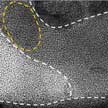 For the first time, researchers have successfully developed a new version of phase-change memory that reduces the switching time and allows memory cells to produce excellent stability.
The new type of phase-change memory can be as fast as state-of-the-art RAM chips being considered to power artificial intelligence (AI) in phones, and it could also be used to power a range of other smart devices. The new version of phase-change memory could be manufactured with a cheap process: The procedure uses a normal voltage pulse and requires no additional special materials.
For the first time, researchers have successfully developed a new version of phase-change memory that reduces the switching time and allows memory cells to produce excellent stability.
The new type of phase-change memory can be as fast as state-of-the-art RAM chips being considered to power artificial intelligence (AI) in phones, and it could also be used to power a range of other smart devices. The new version of phase-change memory could be manufactured with a cheap process: The procedure uses a normal voltage pulse and requires no additional special materials.
Dec 31st, 2018
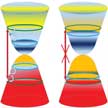 Motivated by the outstanding performance of graphene, graphene-like 2D materials have been intensively investigated, such as topological insulators, transition metal dichalcogenides (TMDs) and black phosphorous. Recently, 2D titanium disulfide, a typical TMD, is found to have strong light absorption properties from visible to infrared region, which is highly attractive for applications in nonlinear photonics. Researchers have fabricated a novel saturable absorber device is successfully fabricated based on 2D TiS2 nanosheets for ultrashort pulse generation and all-optical thresholding at the communication band.
Motivated by the outstanding performance of graphene, graphene-like 2D materials have been intensively investigated, such as topological insulators, transition metal dichalcogenides (TMDs) and black phosphorous. Recently, 2D titanium disulfide, a typical TMD, is found to have strong light absorption properties from visible to infrared region, which is highly attractive for applications in nonlinear photonics. Researchers have fabricated a novel saturable absorber device is successfully fabricated based on 2D TiS2 nanosheets for ultrashort pulse generation and all-optical thresholding at the communication band.
Dec 27th, 2018
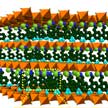 Due to the unique physical and chemical characteristics, such as good electrical conductivity, low weight, large surface areas, high electrochemical activity, and facile doping of heteroatoms or inorganic species, there are increasing demands of fabricating two-dimensional (2D) porous carbon for lithium-ion batteries, supercapacitors, electrochemical catalysts and many other emerged applications in energy storage and conversion. Researchers now have developed a fast, scalable, and eco-friendly active-salt-templating strategy to engineer different types of 2D porous carbons.
Due to the unique physical and chemical characteristics, such as good electrical conductivity, low weight, large surface areas, high electrochemical activity, and facile doping of heteroatoms or inorganic species, there are increasing demands of fabricating two-dimensional (2D) porous carbon for lithium-ion batteries, supercapacitors, electrochemical catalysts and many other emerged applications in energy storage and conversion. Researchers now have developed a fast, scalable, and eco-friendly active-salt-templating strategy to engineer different types of 2D porous carbons.
Dec 21st, 2018
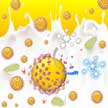 Nanoparticles that mimic the complexity and function of natural enzymes can act as effective peroxidase to catalyse for the oxidization of 3,3,5,5-tetramethylbenzidine (TMB), generating an oxidised blue-coloured product. For the first time scientists found that when the surface of gold nanoparticle (AuNPs) is coated with casein, the intrinsic peroxidase-mimicking activity of AuNPs is suppressed strongly, i.e. by up to 77.1%, due to the surface shielding effects.
Nanoparticles that mimic the complexity and function of natural enzymes can act as effective peroxidase to catalyse for the oxidization of 3,3,5,5-tetramethylbenzidine (TMB), generating an oxidised blue-coloured product. For the first time scientists found that when the surface of gold nanoparticle (AuNPs) is coated with casein, the intrinsic peroxidase-mimicking activity of AuNPs is suppressed strongly, i.e. by up to 77.1%, due to the surface shielding effects.
Dec 6th, 2018
 The idea has been around for a while that selected segments of RNA or DNA could be used therapeutically to affect gene or cell function. The attraction for researchers is the flexibility that these therapeutic nucleic acids' (TNAs) versatility, programmability, and modularity affords them and shows a promising route towards treatment for a wide variety of disorders such as cancer, metabolic disorders, viral infections, cardiovascular and inflammatory diseases. Due to the programmability of RNA and DNA, scientists now are able to embed functional assemblies with controllable immunogenic potential into nucleic acid-based nanoparticles to eliminate the immune response and control the timing of their therapeutic activation.
The idea has been around for a while that selected segments of RNA or DNA could be used therapeutically to affect gene or cell function. The attraction for researchers is the flexibility that these therapeutic nucleic acids' (TNAs) versatility, programmability, and modularity affords them and shows a promising route towards treatment for a wide variety of disorders such as cancer, metabolic disorders, viral infections, cardiovascular and inflammatory diseases. Due to the programmability of RNA and DNA, scientists now are able to embed functional assemblies with controllable immunogenic potential into nucleic acid-based nanoparticles to eliminate the immune response and control the timing of their therapeutic activation.
Dec 5th, 2018
 Researchers report an interesting phenomenon of two-dimensional (2D) hexagonal boron nitride (h-BN)-induced planar-alignment of a nematic liquid crystal and the subsequent optical and electro-optical effects. Liquid crystals (LCs) are optically anisotropic materials, and they are widely used in electro-optical display technology, known as liquid crystal displays (LCDs). Understanding the alignment phenomena of a nematic LC on a surface remains an important area of research, as the alignment process determines the LC's molecular orientation and conformation - which influence the LC's optical and electro-optical characteristics in LCDs.
Researchers report an interesting phenomenon of two-dimensional (2D) hexagonal boron nitride (h-BN)-induced planar-alignment of a nematic liquid crystal and the subsequent optical and electro-optical effects. Liquid crystals (LCs) are optically anisotropic materials, and they are widely used in electro-optical display technology, known as liquid crystal displays (LCDs). Understanding the alignment phenomena of a nematic LC on a surface remains an important area of research, as the alignment process determines the LC's molecular orientation and conformation - which influence the LC's optical and electro-optical characteristics in LCDs.
 Subscribe to our Nanotechnology Spotlight feed
Subscribe to our Nanotechnology Spotlight feed





